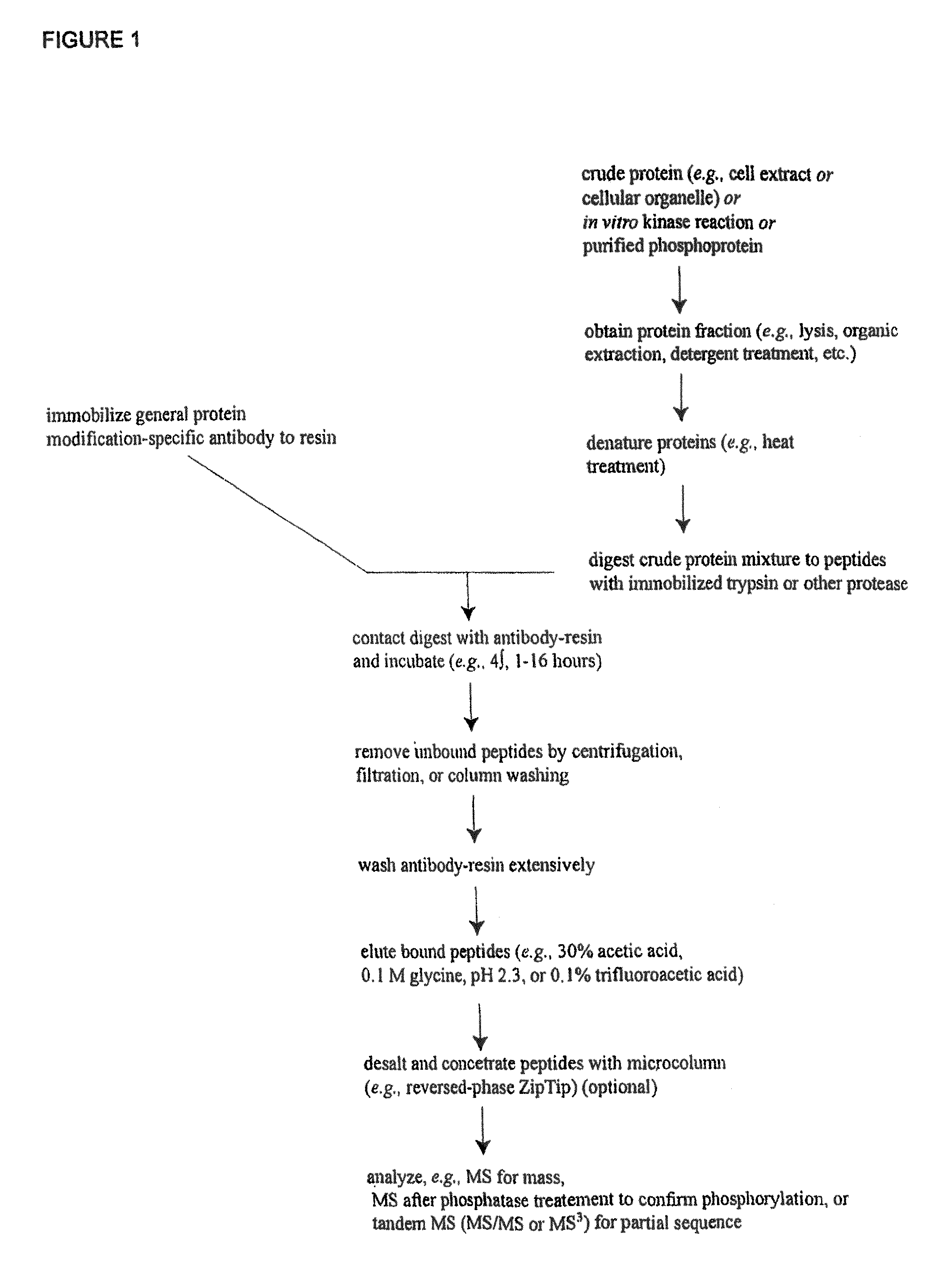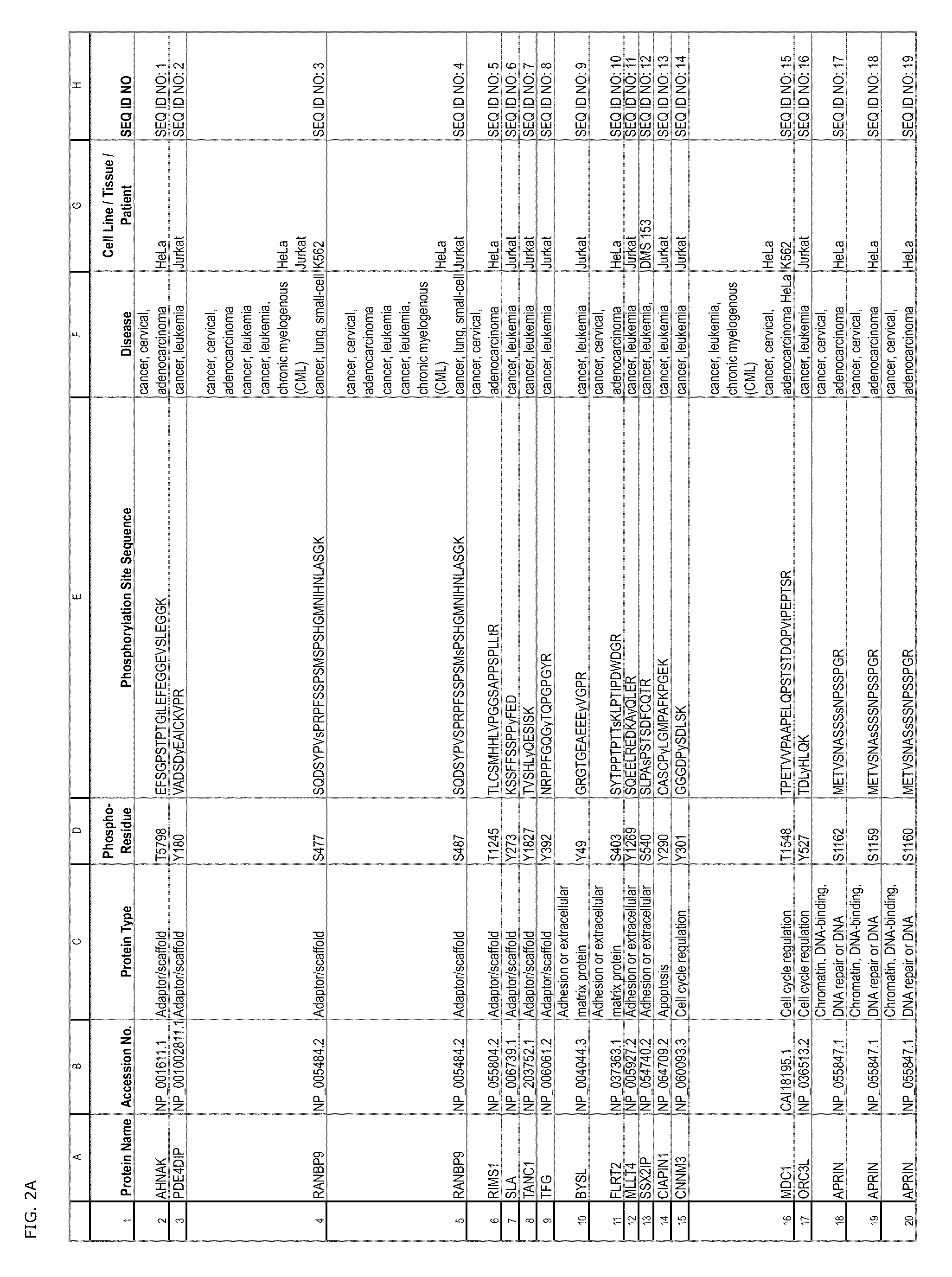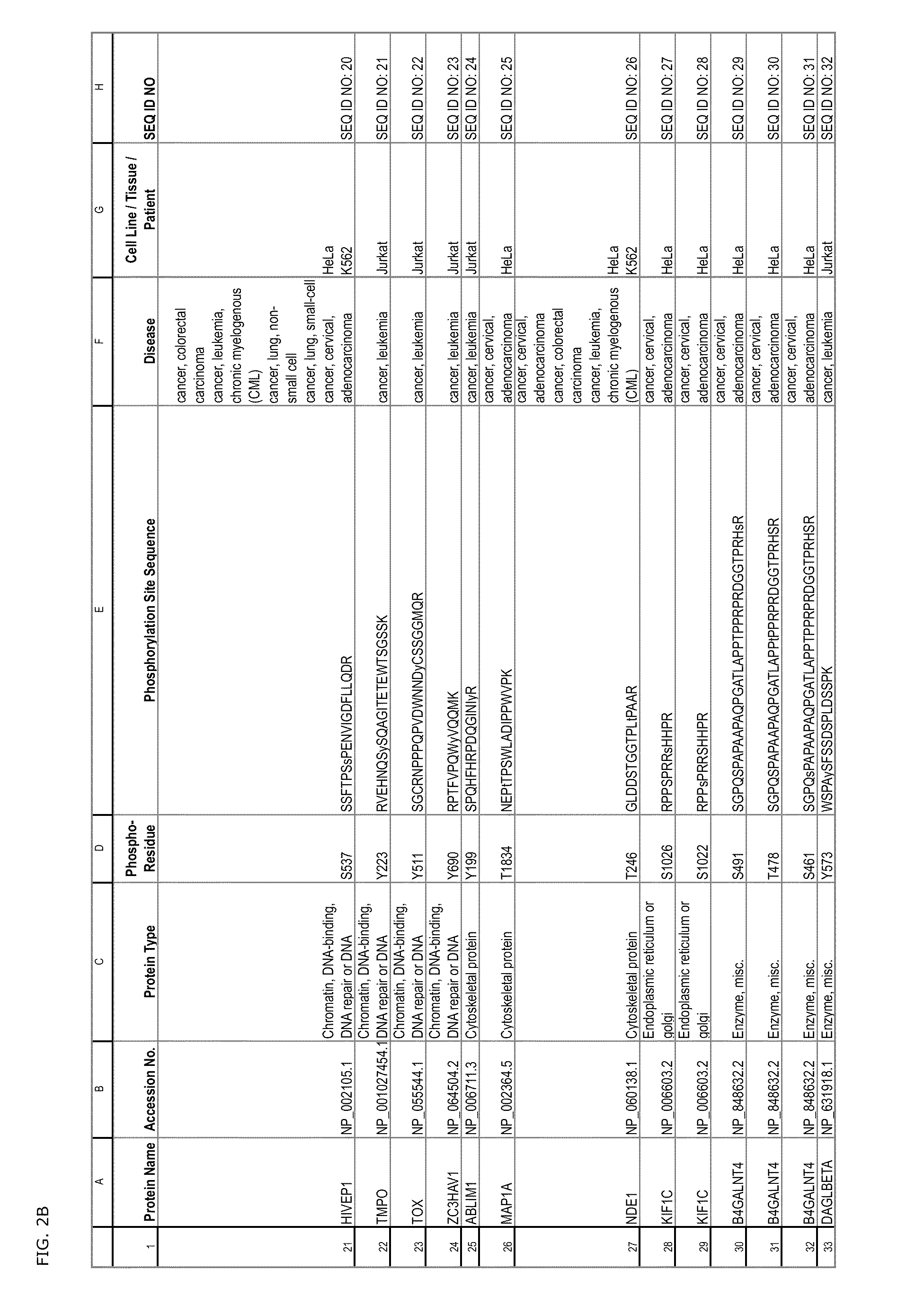Tyrosine, serine and threonine phosphorylation sites
a phosphorylation site and serine technology, applied in the field of tyrosine, serine and threonine phosphorylation sites, can solve the problems of uncontrolled cell proliferation leading to tumor growth, incomplete and inaccurate understanding of how protein activation within the signaling pathway is presently achieved, and the understanding of the signaling pathway is incomplete and inaccura
- Summary
- Abstract
- Description
- Claims
- Application Information
AI Technical Summary
Problems solved by technology
Method used
Image
Examples
example 1
Isolation of Phospho-Tyrosine, Phospho-Serine and Phospho-Threonine Containing Peptides from Extracts of Carcinoma and Leukemia Cell Lines and Tissues and Identification of Novel Phosphorylation Sites
[0272]In order to discover novel tyrosine, serine and / or threonine phosphorylation sites in carcinoma, IAP isolation techniques were used to identify phosphotyrosine, serine and / or threonine-containing peptides in cell extracts from human carcinoma cell lines and patient cell lines identified in Column G of Table 1 including HeLa, Jurkat, K562, DMS 153, H69 (xenograft), HT29, M01043, H526, DMS 53, DMS 79, and MEC-1 Tryptic phosphotyrosine, serine and / or threonine-containing peptides were purified and analyzed from extracts of each of the cell lines mentioned above, as follows. Cells were cultured in DMEM medium or RPMI 1640 medium supplemented with 10% fetal bovine serum and penicillin / streptomycin.
[0273]Suspension cells were harvested by low speed centrifugation. After complete aspirat...
example 2
Production of Phosphorylation Site-Specific Polyclonal Antibodies
[0289]Polyclonal antibodies that specifically bind a novel phosphorylation site of the invention (Table 1 / FIGS. 2A-2M) only when the tyrosine, serine and / or threonine residue is phosphorylated (and does not bind to the same sequence when the tyrosine, serine and / or threonine is not phosphorylated), and vice versa, are produced according to standard methods by first constructing a synthetic peptide antigen comprising the phosphorylation site and then immunizing an animal to raise antibodies against the antigen, as further described below. Production of exemplary polyclonal antibodies is provided below.
A. TFG (Tyrosine 392).
[0290]A 17 amino acid phospho-peptide antigen, NRPPFGQGy*TQPGPGYR (SEQ NO:8; y*=phosphotyrosine), which comprises the phosphorylation site derived from human TFG (an adaptor / scaffold protein, Tyr 392 being the phosphorylatable residue), plus cysteine on the C-terminal for coupling, is constructed acco...
example 3
Production of Phosphorylation Site-Specific Monoclonal Antibodies
[0297]Monoclonal antibodies that specifically bind a novel phosphorylation site of the invention (Table 1) only when the tyrosine, serine and / or threonine residue is phosphorylated (and does not bind to the same sequence when the tyrosine, serine and / or threonine is not phosphorylated) are produced according to standard methods by first constructing a synthetic peptide antigen comprising the phosphorylation site and then immunizing an animal to raise antibodies against the antigen, and harvesting spleen cells from such animals to produce fusion hybridomas, as further described below. Production of exemplary monoclonal antibodies is provided below.
A. ORC3L (Tyrosine 527).
[0298]A 8 amino acid phospho-peptide antigen, TDLy*HLQK (SEQ ID NO: 16; y*=phosphotyrosine), which comprises the phosphorylation site derived from human ORC3L (a cell cycle regulation protein, Tyr 527 being the phosphorylatable residue), plus cysteine o...
PUM
| Property | Measurement | Unit |
|---|---|---|
| concentration | aaaaa | aaaaa |
| dissociation constant | aaaaa | aaaaa |
| dissociation constant | aaaaa | aaaaa |
Abstract
Description
Claims
Application Information
 Login to View More
Login to View More - R&D
- Intellectual Property
- Life Sciences
- Materials
- Tech Scout
- Unparalleled Data Quality
- Higher Quality Content
- 60% Fewer Hallucinations
Browse by: Latest US Patents, China's latest patents, Technical Efficacy Thesaurus, Application Domain, Technology Topic, Popular Technical Reports.
© 2025 PatSnap. All rights reserved.Legal|Privacy policy|Modern Slavery Act Transparency Statement|Sitemap|About US| Contact US: help@patsnap.com



